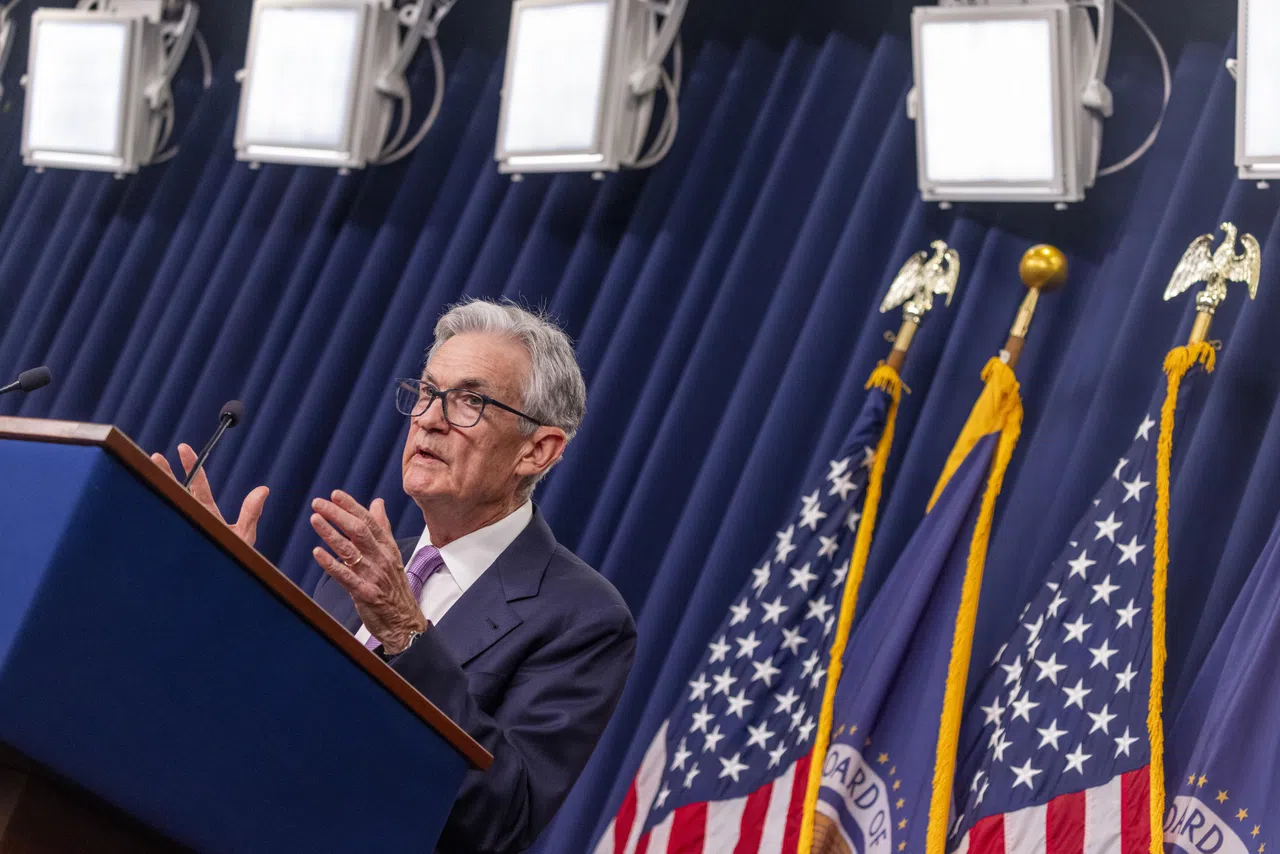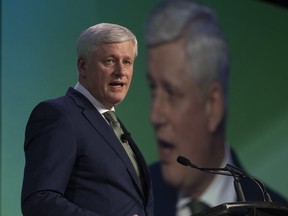THE US Federal Reserve cut interest rates as expected on Thursday (Nov 7), the quarter-percentage-point cut coming as no surprise to anyone.
What was more surprising, however, was chairman Jerome Powell’s rosy picture of a Goldilocks-like US economy – one that’s not too hot and not too cold.
At his traditional press conference after the Fed’s two-day meeting, he marvelled at the “remarkable” resilience of US labour markets and consumer spending.
In his words, economic growth was neither too cold (recessionary) nor too hot (inflationary). While he refused to divulge if the central bank was planning another rate cut in December, he did express confidence that rate policy was still restrictive and slowing economic growth, and that the Fed was looking for a neutral level.
He added that data between now and December could reveal an upside or a downside surprise. If the labour market softens further, as Powell seemed to anticipate, a rate cut would be guaranteed. If economic data continues to improve and inflation data heats up, it would give the Fed the option to pause.
Recent data has created “a sense of some of the downside risks to economic activity having been diminished”, said Powell. The rate-setting committee is “feeling good” about its full-employment mandate.
BT in your inbox
Start and end each day with the latest news stories and analyses delivered straight to your inbox.
“We’ve had one inflation report that wasn’t terrible, but it was a little higher than expected,” he said. The September reading of the consumer price index, at 2.4 per cent, was close to the Fed’s comfort zone, but it had moved in the wrong direction, and exceeded economists’ expectations.
Since and even before Donald Trump’s remarkable election victory on Wednesday, Treasury yields have risen because of fears that his policies would stoke inflation or cause a deficit crisis, or both.
Powell said the Fed was following developments in the Treasury market, but pointed out that yields were still not at their cycle highs. Concerns that yields at current levels could thwart the Fed’s attempts to alleviate economic pressure were premature, he said.
As for Trump’s fiscal policy plans, Powell said it was far too early to anticipate any changes in Fed policy in response. The central bank would model the likely economic impact of policy once the legislation is written, he said.
Powell refused to be drawn on whether he was concerned about a deficit crisis under Trump’s leadership. As a general matter, the Fed chair said, current levels of US debt are sustainable, but the path of spending more than is taken in as income is unsustainable.
One Wall Street strategist said the Fed would likely be interpreting the market response to Trump’s victory as much as he does. The stock market is saying Trump’s tax cutting and deregulation will be good for business, but the bond market is warning that tariffs and tax cuts will also cause inflation, said Scott Helfstein, head of investment strategy at money manager Global X.
“While the Fed feels the risks are balanced between stable prices and maximum employment, this could shift quickly, increasing the risk to reaccelerating inflation,” he said.
The only imminent risk that Powell fears could spoil the Goldilocks tea party on the US economy is a major geopolitical shock.
He echoed warnings from JPMorgan chief executive Jamie Dimon – that conflicts in the Middle East and Russia could be ruinous for global social and economic stability. Oil futures are currently hovering around US$70 a barrel, but any escalation of the conflict between Israel and Iran could send them above US$90 a barrel, where they could cause wider inflationary pressures.
The stock market was volatile during and after Powell’s press conference on Thursday, with the Dow Jones Industrial Average closing more or less flat near its record high of 43,729, after a 1,500-point surge on Wednesday, post-election.
The main hope by analysts was that Powell would tacitly promise another rate cut. While the market did not hear that specifically, at least one economist felt otherwise.
“Although he stressed data dependence as expected, he gave several indications that a December cut remains his base case,” said Aditya Bhave, US economist at brokerage Bank of America Securities.
“He discussed the strength of many economic indicators, including productivity, and described the performance of the US economy as remarkable.”
Powell did not say it in such words, but his underlying message seemed to be this: Enjoy the rate cuts, the Goldilocks economy and the stock-market euphoria for the time being. The Fed will worry about tariffs, deficits and everything else later.







